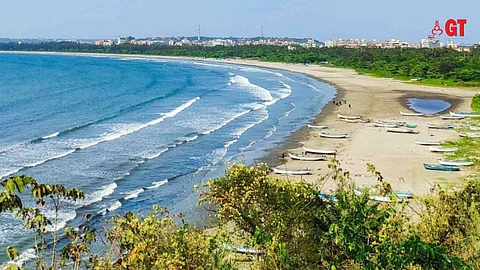

There is no divide, but the distinction between tourism in North and South Goa is getting clear, and it zeroes down to noise levels. Those who enjoy the noise, stay on in the north, the rest have started moving south.
So, if you are in the north and you see less traffic during the week – except on long weekends – it is because there are not many parties happening, and hence, less noise and therefore less guests.
The flow in the south is holding steady with foreign tourists and high-end domestic tourists preferring to soak in the sun throughout the week. The beaches here are the choicest grounds for those who have attained senior citizenship and want to enjoy some peace and quiet.
The number of lower middle-class tourists has increased, and at times, the distinction between different visitor groups can be subtle, with behaviour often being one of the key differences.
The flow in the south is holding steady with foreign tourists and high-end domestic tourists preferring to soak in the sun throughout the week.
Tourism stakeholders around the world tend to focus on attracting middle and upper class visitors, as they contribute significantly to the industry. However, challenges arise when the flow of money is limited, which can impact the overall experience and lead to potential issues.
There are channels through which tourism flows and some of these are private travel agencies and government agencies that draw tourists from different parts of the world to India.
Within India, apart from private and government tour operators, social media is the new force that has been driving people crazy with reels and stories, most of which have limited information.
This has a strong impact, especially since it can be easier to spark interest with captivating content, but managing that excitement effectively can be challenging, particularly when there is a lack of awareness or education.
Many tourists arrive in Goa through various channels, and it's often easy to place blame on long-standing touts, who have been allowed to operate without much oversight. However, it's important to recognise that the responsibility also lies with us, as we are all part of the broader situation.
Many tourists arrive in Goa through various channels, and it's often easy to place blame on long-standing touts, who have been allowed to operate without much oversight.
Touts have become deeply ingrained in the local tourism scene, making it difficult to address the issue. It suggests that the government has not shown enough commitment to tackle the problem, and as a result, the local community bears the consequences.
After years of hosting tourists, the locals now have a clear understanding of which visitors to welcome and how to do so, emphasising that it’s unnecessary to repeatedly remind those tourists who continue to visit.
Tourism has always been about quality and not quantity. The more the tourists we try to attract, the deeper we go down the pit. Therefore, let us first ascertain the numbers we can handle.
There was a time when greed overshadowed everything, and every available space was turned into a tourism opportunity. It started to feel as though the essence of Goa was being replaced by concrete development, rather than the other way around. Now, we are beginning to face the consequences of that growth.
There was a time when greed overshadowed everything, and every available space was turned into a tourism opportunity.
The ill today is differentiated by those who want noise and those who do not and that is the divide that stakeholders will need to mend. It will take time because for the greedy, noise does not matter. It does not matter how loud one is as long as the noise of the tills is loudest.
Anette who first loved staying in the north, has moved to the south because she finds the essence of Goa more distinct there now. If you decide to settle out of Goa, she whispers to a local, tell me because I will follow.
For most guests, except for the ones who love noise, Goa is about Goans. Let’s not let them down by forgetting who we are.